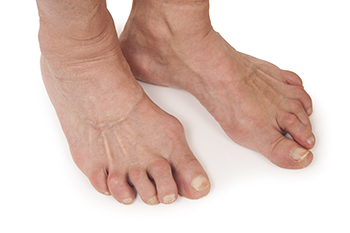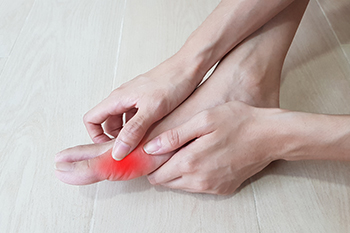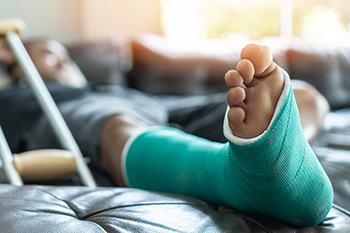
Managing foot pain associated with rheumatoid arthritis, or RA, is vital for maintaining mobility and quality of life. Podiatric interventions for RA typically focus on a multi-faceted approach that combines medication, exercise, custom orthotics, and sometimes surgical treatments. Medications for rheumatoid arthritis can include anti-inflammatory or disease-modifying antirheumatic drugs to reduce pain. Corticosteroid injections are given for localized foot pain or an affected joint, and can offer temporary relief from inflammation. Custom orthotics are tailor-made shoe inserts that can provide better arch support and cushioning to relieve stress on inflamed joints. In severe cases where deformities have developed, surgical interventions such as joint fusion or joint replacement may be considered. If you suffer from rheumatoid arthritis and it is causing pain in your feet or ankles, it is strongly suggested that you make an appointment with a podiatrist for relief and pain management techniques.
Because RA affects more than just your joints, including the joints in your feet and ankles, it is important to seek early diagnosis from your podiatrist if you feel like the pain in your feet might be caused by RA. For more information, contact one of our podiatrists of Associates in Podiatry, PC. Our doctors will assist you with all of your podiatric concerns.
What Is Rheumatoid Arthritis?
Rheumatoid Arthritis (RA) is an autoimmune disorder in which the body’s own immune system attacks the membranes surrounding the joints. Inflammation of the lining and eventually the destruction of the joint’s cartilage and bone occur, causing severe pain and immobility.
Rheumatoid Arthritis of the Feet
Although RA usually attacks multiple bones and joints throughout the entire body, almost 90 percent of cases result in pain in the foot or ankle area.
Symptoms
- Swelling and pain in the feet
- Stiffness in the feet
- Pain on the ball or sole of feet
- Joint shift and deformation
Diagnosis
Quick diagnosis of RA in the feet is important so that the podiatrist can treat the area effectively. Your doctor will ask you about your medical history, occupation, and lifestyle to determine the origin of the condition. Rheumatoid Factor tests help to determine if someone is affected by the disease.
If you have any questions please feel free to contact our offices located in Pittsburgh-South Hills, and Pittsburgh-Bellevue, PA . We offer the newest diagnostic and treatment technologies for all your foot and ankle needs.





